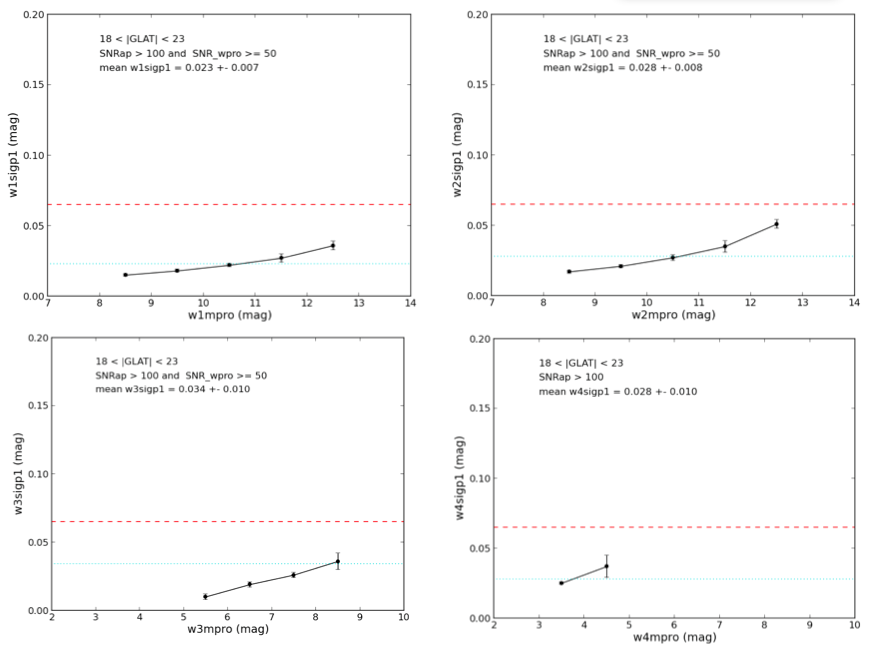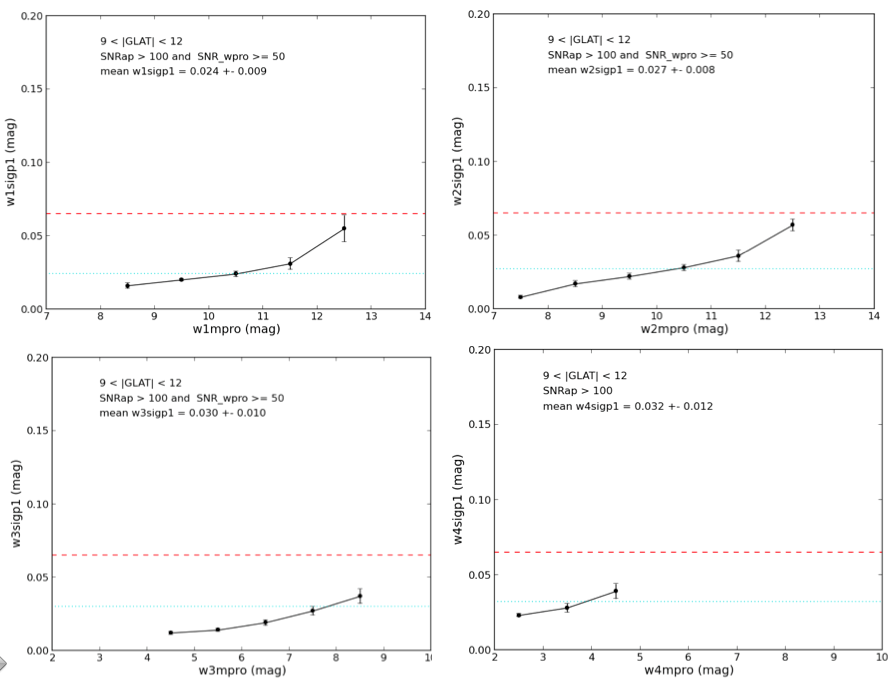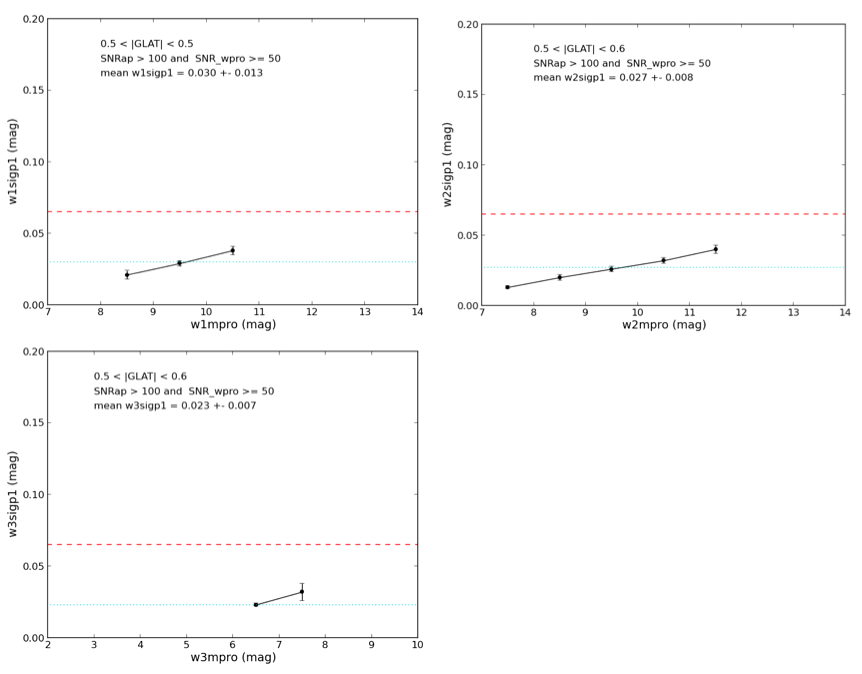


Unlike the All-Sky data release, there is no formal requirement for photometric accuracy in the ALLWISE data; nevertheless, the overall results are outstanding and would in fact satisfy the All-Sky requirement.
We will be assessing the photometric accuracy of the WPRO (profile-fitting) photometry of bright stars using the internal repeatability of WPRO measurements. However, in order to draw the sample to study, we will be using the S/N as given by the standard aperture photometry. The reason is that the WPRO S/N includes a contribution due to the uncertainty in the Point Spread Function (PSF), essentially flooring all S/N values to be less than S/N=60 or so; whereas, the aperture photometry provides a reasonable estimate of source's S/N in a given band.
For detailed study (Figures 1-4, presented below), we will first draw a clean sample of bright starsfrom high galactic latitudes, thus minimizing the effects of stellar confusion. Bulge. We then draw samples from different latitudes, stepping all the way down to the Galactic Plane. The results are presented below.
The W1 repeatability results for the bright S/N > 100 sample are shown
in Figure 1. The panels show, per band, the standard deviation in the population (parameter
w?sigP1),
representing the RMS of WPRO measurements for one frame.
The results show that the photometric accuracy for each band, as indicated by the
repeatability RMS (w?sigP1), is ~2 to 3%, well within the ALLSky 4-band Cryo requirement of 7% for bright S/N > 100 sources.
Figure 1: High Galactic Latitude Sky: 60 > GLAT < 75 deg
 |
| Figure 2 - WPRO internal repeatability RMS for moderate source densities. |
 |
| Figure 3 - WPRO internal repeatability RMS for high source densities. |
 |
| Figure 4 - WPRO internal repeatability RMS for high source confusion. |
 |
Observed WPRO repeatability satisfies the nominal ALLSKY relative photometric accuracy requirement.
Comparison of WISE W1 and W2 with Spitzer photometry (S/N > 100) is consistent with "accurate" WISE photometry, exceeding the Level-1 requirement.
Last update: 22 November 2013


